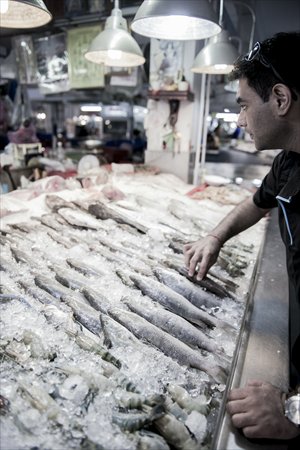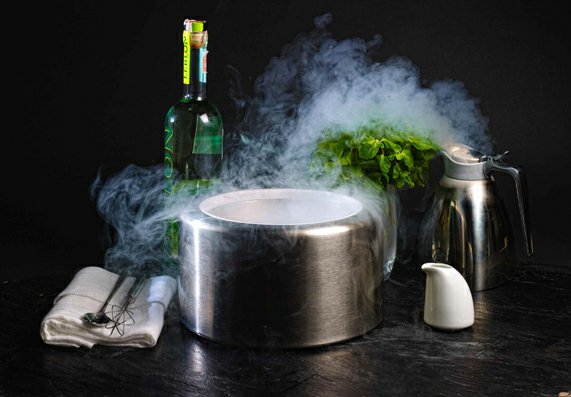Progressive Indian cuisine

World chef Gaggan Anand picks out a fish for dinner. Photo: Courtesy of Gaggan restaurant

A pot dish served at his restaurant Gaggan. Photo: Courtesy of Gaggan restaurant
Gaggan Anand began cooking to avoid classrooms but one subject the Kolkata native embraces is science.
After leaving school in India, Anand cooked in the kitchens of some of Asia's best hotels before studying with the research team at Spain's famed El Bulli restaurant where he learned to physically and chemically transform ingredients.
At the eponymous Gaggan restaurant in Bangkok, Anand applies his training at Ferran Adria's culinary lab by translating traditional flavours from his homeland into works of art that challenge preconceptions about how Indian food should taste and look.
A self-proclaimed rebel, Anand spoke to Reuters about his deconstructive approach to Indian cooking, ranging from spherical raita that bursts in the mouth to "Viagra" oysters with truffle foam served in a treasure chest.
Q: Did you always know you were going to do molecular cuisine when you opened Gaggan?
A: I was bored of doing the same old thing because I'm the kind of person whose anxiety levels are very high, so I wanted to do something which had not been done before to Indian food. At first we wanted to open a curry house with tapas style food but over time our concept evolved. It was a journey that I did not plan.
Q: How was your concept met in Bangkok?
A: My misconception was that, apart from their own cuisine, Bangkokians only like Italian and Japanese food. I was proved wrong and our restaurant, with its cutting-edge approach to Indian food, has its own market which is people who want to eat comfort food made using new techniques. This is food for the common man and not for the pretentious foodie.
Q: Your cuisine has been described as molecular gastronomy. Do you accept that definition?
A: I call it progressive cuisine because the first thing I learned at El Bulli was that there is no such thing called molecular gastronomy. Ferran Adria explained that we cannot be molecular scientists because we are chefs. We don't count when we put salt in food because we know from our hearts how much salt we need to put. What I'm doing is progressing the history of Indian food.
Q: What inspires you?
A: My ideas are based on Indian history and my nostalgic tastes including what I've eaten before, where I've eaten it and where I've been in my life. That's why I travel so often to India, at least once every two months, so that I get more exposure to my own cuisine and so I don't forget the flavours.
Q: Your kitchen is stocked with tanks of liquid nitrogen. Tell us about the tools you have in your arsenal.
A: Of course you have to understand some basics like you can't put your hand in liquid nitrogen or it will fall off! With liquid nitrogen you can do things you could not do with ice like freezing alcohol in seconds. But you can't serve it or customers would burn their mouths. You have to make sure it is palatable.
Q: You started off as what kind of musician?
A: I play the drums, hard rock music. We play music in the kitchen everyday because I want the ambience to be playful.
Q: Where is Indian cooking going next?
A: One good thing is a lot of Indian chefs are leaving their hotel comfort zones and venturing out more.
Indian cuisine is diverse, unscripted and not homogeneous. There is so much potential there.
'Paradise'
4 cl Malibu
2 cl white rum
5 cl coconut milk or cream (canned)
1 cl fresh lemon juice
1 cl white syrup
1 cl fresh coconut water
1 tonka bean
1 coconut, cut in half with the water poured out
* dry ice
(1 cl=1/3 of a US ounce)
(Serves 1)
1. Pour the Malibu, white rum, coconut milk, lemon juice and white syrup into a cocktail shaker.
2. Shake the mixture for a few seconds.
3. Pour into one half of a coconut shell.
4. Whip the coconut water using an oxygen whip.
5. Place the coconut water foam on top of the cocktail.
6. Grate a pinch of Tonka bean on top of the foam.
7. Serve on a bed of dry ice with a glass of hot coconut water on the side.